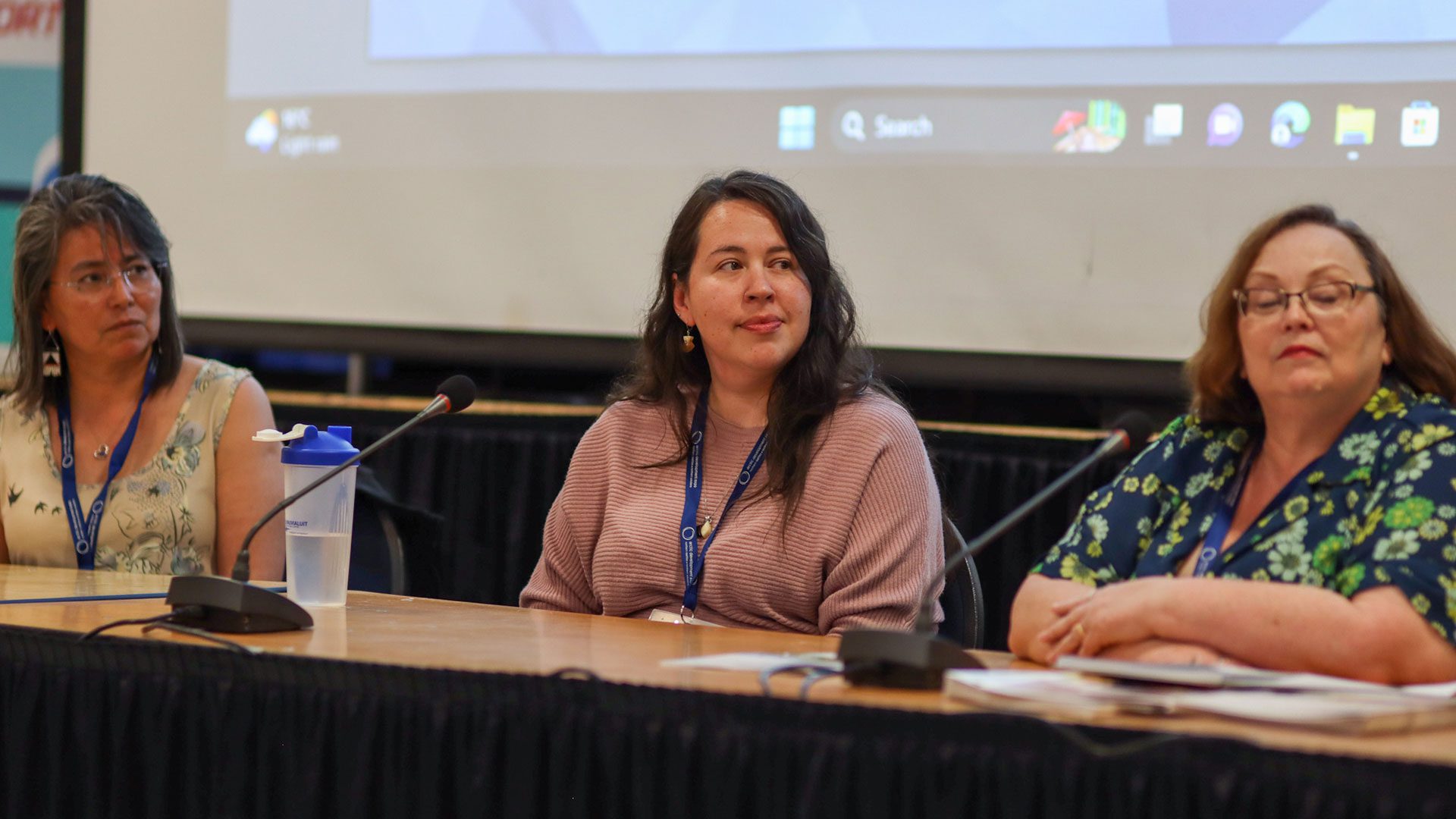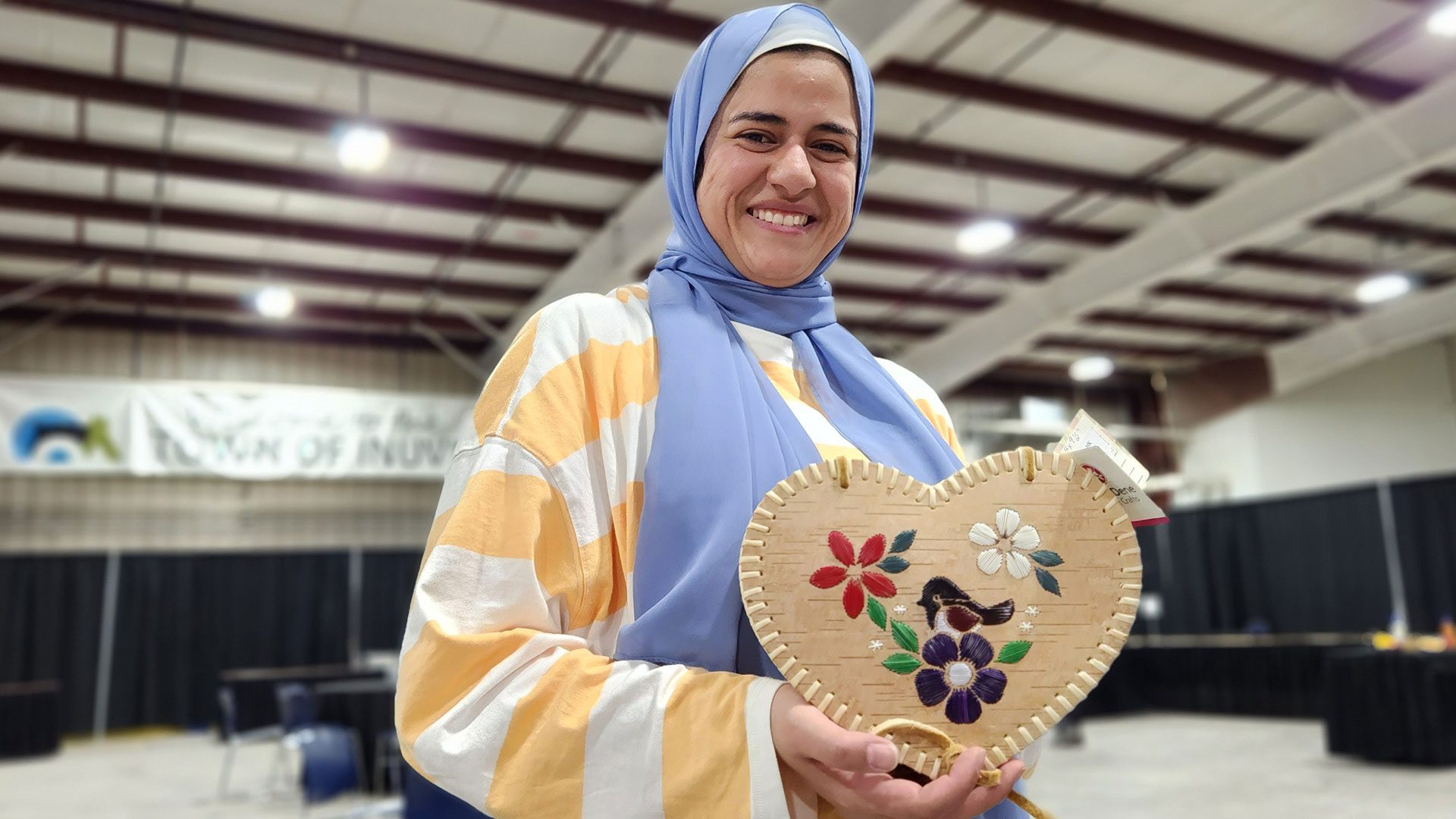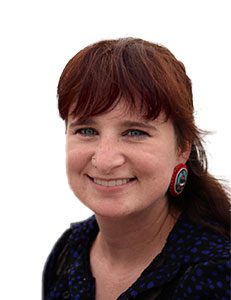The small Western Arctic community of Inuvik hosted people from around the world with its 4th annual Arctic Development Expo.
“I think at this expo, it’s the perfect opportunity for people to learn and find information,” said Inuvik Inuvialuit artist Bambi (Tagyiluk-Aullaran) Amos. “Not only from like, like government programs or other grant funding, but also like an artist like me, I can share that information.”
Amos said she’s been attending the expo over the years, and it’s been part of the building blocks for her to feel comfortable to put herself out there as a full-time artist.
Having an expo booth, this was her first year invited to speak on a panel on small business as fashion.

“I spoke a little about a little bit about barriers that artists can face like the lack of knowledge and not knowing how to reach out for support in training, funding, and where to get materials,” she said.
“Being from the coast of the Arctic Ocean, where we do have seals, fleshing the hides and preparing them,” she said.” It’s a personal thing for me, why not create beautiful artwork with the fur?”
She said working with network Proudly Indigenous Crafts and Designs and NWT Arts have helped her expand her reach and ability to choose where she gets furs despite still certain international barriers on seal products.
Originally from Sachs Harbour, she said these support programs have also allowed her to select furs from certain regions including from her own Inuvialuit Settlement Region as from Ulukhaktok.
“That’s one of the perks of being a member of NWA ARTS, so I totally encourage others to do so.”
Jackie Challis, Organizer and Director for Economic Development & Tourism for Town of Inuvik said was their largest turnout with the largest Indigenous presence and support including from the local Gwich’in Tribal Council.
The fourth Inuvik Arctic Development Expo, the town had originally hosted as the Inuvik Petroleum Show started in 2000 and shipped the name and focus in 2019.
Panels at the Arctic Development Expo range from satellites, Indigenous leadership, and renewable energy.
“Helping people understand the effects of climate change it’s a must now,” said attendee Fatima Ahmed. “it’s a serious problem. It’s not something that we can, we can ignore, and we have to work hard to improve that.”

She said she came as part of a delegation from the University of Saskatchewan conducting research and interviews on the impacts of climate change across the circumpolar Arctic.
Under Measuring Urban Sustainability in Transition (MUST), she said they recently conducted interviews in the nearby community of Aklavik.
“The Sustainable Development Goals (SDG) do not really work for the Arctic,” she said. “They have their own environmental challenges and social and economic challenges which is not necessarily reflected in the SDG’s and this is why we are focusing [on].
“We are trying to investigate the effects of climate change on the Arctic and to measure the effects in the impact of this on the region, and to find solution.”
She said there are still little Indigenous representation working and taking leads in renewable energy projects and encourages more local Indigenous interest and pursuit in careers I renewable energy projects who know Arctic realities.
“I think decisions should come from them and they have to be part of this,” she said. “I think one of the things that it would be very helpful is to have an organization that educates and help youth to participate and then they would be able to take decisions.”
The panels closed on youth and storytelling including members from the award-winning Inuvialuit-owned Tusayaaksat Magazine and the Western Arctic Youth Collective (WAYC). Focusing on guests to the region, they highlighted the realities of trauma in region with the last residential school in Inuvik closing in 1996, the highest suicide rates, and the need to implement Truth and Reconciliation Call to Action 66 on the implementation of multi-year community-based funding for youth programs.
“They were speaking a lot about youth and youth opportunities, we were the only youth group there,” said Monica Loreen-Dillon of WAYC.
“We need to fund more youth programs in these small communities.”
“When the show is over, when the project’s done, when the money is spent, we’re still here,” she said. “I don’t think many people understand that what they’re investing in the communities they’re investing in and how they leave the people, so I think we had a lot of people’s minds and hearts when we said that.”
Next year’s Expo is June 10th-12th










